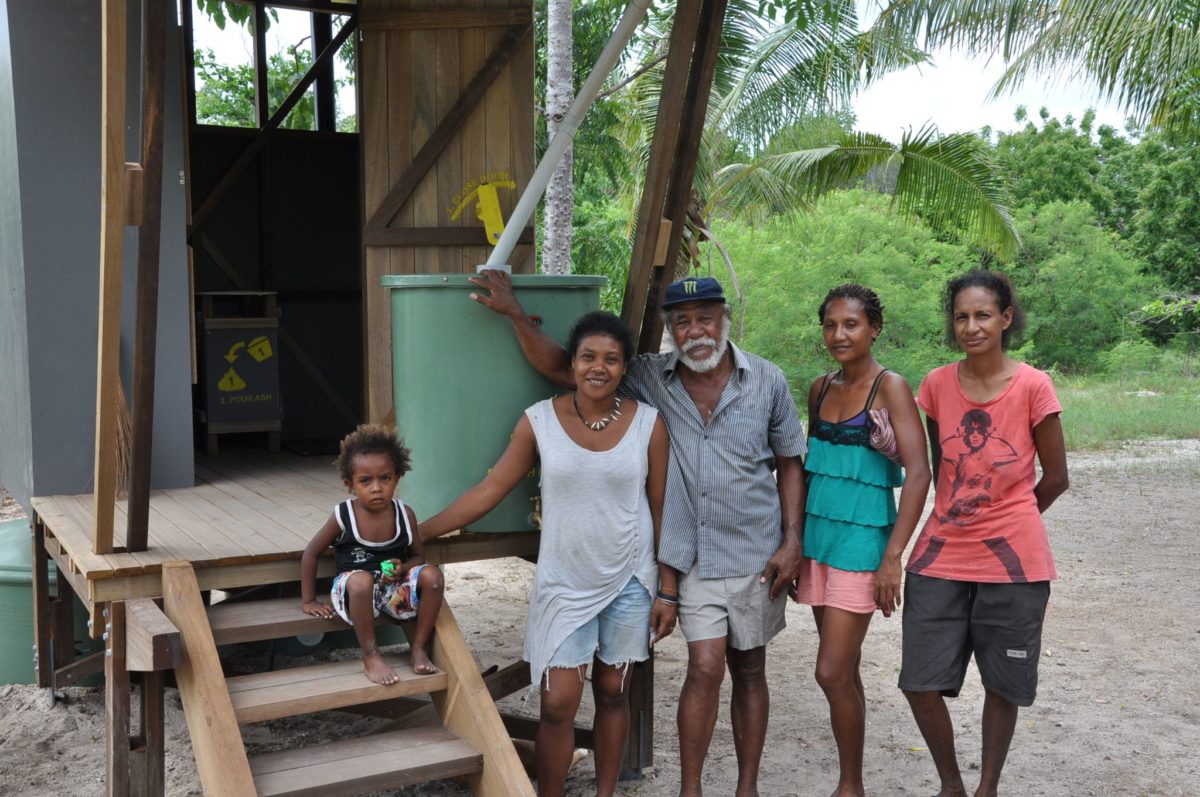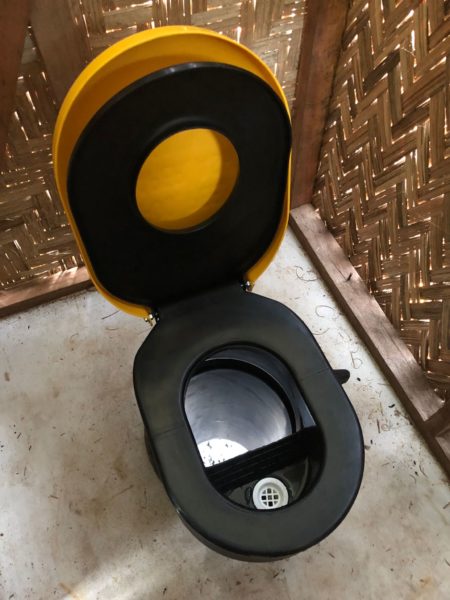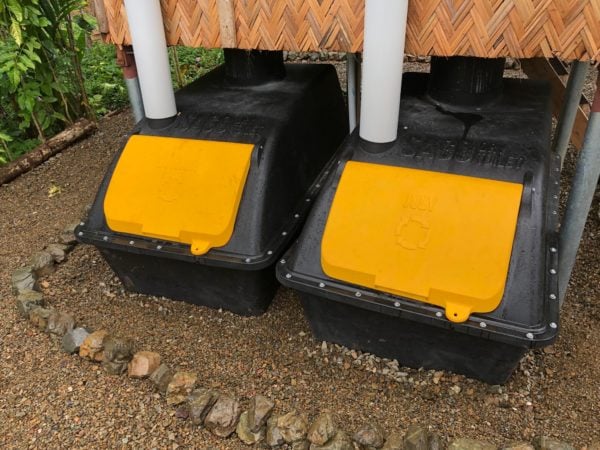Update – Sago Network pt.2 – Sago Dry Toilet

The Sago Dry Toilet, designed for a tough environment.
We know having a functioning toilet that removes waste safely is critical for ongoing health. What happens when you live in a remote village with minimal water, frequent flooding and a high water table?
This is the issue the Sago Dry Toilet aims to address.
Now available from local hardware stores in PNG the Sago Dry Toilet has been developed by Sago Network and collaborating villages over a period of 5 years as a response to various environmental factors. The well-established and wide spread ventilated improved pit toilet is a cost effective and appropriate solution for many communities. However, a high proportion of
PNG’s population living on a narrow coastal fringe or in concentrated valleys where the water table is very high and in these environmental conditions the effective depth of pits is only
minimal and the effort to constantly shift toilet locations is physically onerous and politically challenging in ever densifying villages. The need for a permanent, above-ground, waterless
sanitation solution was clear and the Sago Dry Toilet is now an industrially-designed and locally manufactured, high quality kit of parts that provides a permanent, above-ground, fullysealed, waterless sanitation solution.
Toilet Function and Features
Based on the centuries-old principles of a dehydration toilet the Sago Dry Toilet has the following features and functions:
- Adults and children are accommodated by two differing toilet seat sizes.
- A urine diversion system catches liquids and pipes them to an absorption trench which safely disposes of the urine without treatment.

Solid and liquid waste is separated from the start to aid with the dehydration of the solid waste
- Dual tanks, used on six monthly rotation, receive the solid waste.

Waste tanks with 6-month reminders built-in
- After every couple of uses, owners apply a scoop of ash which neutralises the pH levels within the tanks (ash is normally readily available given most target communities still cook on wood fuel fire).
- Ventilation pipes constantly draw air through the tanks to dehydrate the solid waste.
- Air is expelled high above the toilet via vent pipes and ventilators driven by both convection from warm air rising from the black plastic tanks and from wind which spins the high-level ventilators.
- While one tank is used to catch waste over a six month period, the second tank dehydrates and desiccates waste collected from the previous six month period.
- Every six months one tank is decommissioned to dehydrate its fresh waste and the other tank is emptied of its dehydrated material and recommissioned as an empty
chamber. - The material removed from the tanks is a sand-like fertiliser that doesn’t smell and is suitable to be used on fruit trees and above-ground crops but isn’t recommended for root crops as the material is still a fertiliser.
- Graphical posters remind users of how the toilet works and how to maintain the toilet with simple steps.
Community Reach from Scale
By manufacturing the Sago Dry Toilet as a readily available kit of parts, Sago Network’s intention is to provide as many communities as possible with an option for a permanent, waterless and robust sanitation solution to communities across PNG. By developing a mass-produced product the Sago team hopes to improve village sanitation and PNG’s health beyond the limited number of communities the team can work with directly. The cost of each toilet often requires funding from beyond a village but with government and the private sector now funding WASH infrastructure with a new degree of commitment the Sago Dry Toilet is within reach of many communities. Sanitation programmes using the Sago Dry Toilet are already starting to roll out with 70 Sago Dry Toilets already in communities in the first six months after the toilet was released.

Since so many communities in PNG are near the water the Sago Dry Toilet has been designed to be transported by boat.
From Sago Network;
Reflections on the Sago / HH Collaboration
The Sago Network team reflects that the long-standing collaboration with Healthabitat was not only formative to the community engagement philosophy that sits at the centre of Sago
Network’s approach but Healthabitat’s involvement in the Sago Studio programme and the Sago Dry Toilet that has emerged from this village-level research has been pivotal to all of the small advances we have made to improve health in Papua New Guinea. Healthabitat’s impact extends beyond its own community programmes to continue to inspire others in their own frontline work to improve community health and global equality.









